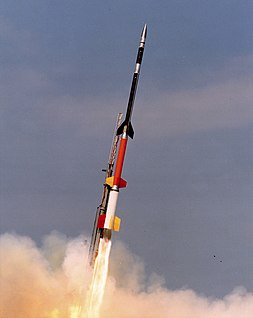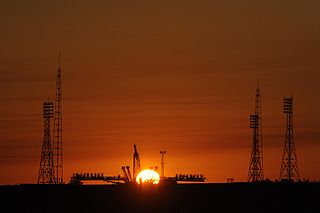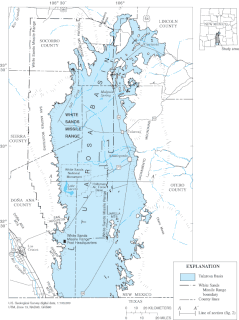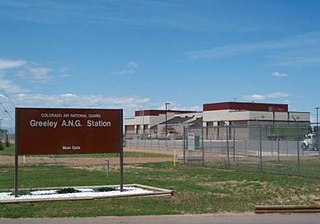Operation Have Horn was a project in 1969 by the United States Air Force that involved the launching of Nike Hydac sounding rockets. It occurred at North Truro Air Force Station, located in North Truro, Massachusetts. Upon completion of the operation in 1970, the used devices were returned to the White Sands Missile Range, in New Mexico. Have Horn was support and carried out by the Missile and Drone Division of the Air Force Missile Development Center, Holloman Air Force Base, New Mexico. [1]

The United States Air Force (USAF) is the aerial and space warfare service branch of the United States Armed Forces. It is one of the five branches of the United States Armed Forces, and one of the seven American uniformed services. Initially formed as a part of the United States Army on 1 August 1907, the USAF was established as a separate branch of the U.S. Armed Forces on 18 September 1947 with the passing of the National Security Act of 1947. It is the youngest branch of the U.S. Armed Forces, and the fourth in order of precedence. The USAF is the largest and most technologically advanced air force in the world. The Air Force articulates its core missions as air and space superiority, global integrated intelligence, surveillance, and reconnaissance, rapid global mobility, global strike, and command and control.

A sounding rocket, sometimes called a research rocket, is an instrument-carrying rocket designed to take measurements and perform scientific experiments during its sub-orbital flight. The rockets are used to carry instruments from 30 to 90 miles above the surface of the Earth, the altitude generally between weather balloons and satellites; the maximum altitude for balloons is about 25 mi (40 km) and the minimum for satellites is approximately 75 mi (121 km). Certain sounding rockets have an apogee between 620 and 930 miles, such as the Black Brant X and XII, which is the maximum apogee of their class. Sounding rockets often use military surplus rocket motors. NASA routinely flies the Terrier Mk 70 boosted Improved Orion, lifting 600–1,000-pound (270–450 kg) payloads into the exoatmospheric region between 60 and 125 miles.

North Truro Air Force Station (AFS) is a closed United States Air Force General Surveillance Radar station. It is located 2.2 mi (3.5 km) east of North Truro, Massachusetts.
Due to the involvement of the Air Force Cambridge Research Laboratories in the operation, it was deemed easier to launch the rockets in North Truro under the code name Have Horn. Thus, a sounding rocket launcher and support equipment were installed at the station, and a series of Nike-Hydac rockets were fired from December 1969 to early 1970. The goal of the operation was to test sensors for the Massachusetts Institute of Technology. Following the end of the operation, the equipment was airlifted back to Holloman. [1] [2]
Nike Hydac is the designation of an American sounding rocket with two stages, based upon the Nike Ajax system. The Nike Hydac was launched 87 times from many missile sites. Such sites were White Sands Missile Range, Poker Flat Research Range, Kwajalein Missile Range, Cassino Site - Rio Grande Airport, Brazil, and from North Truro Air Force Station in Massachusetts during Operation Have Horn in 1969.

The Massachusetts Institute of Technology (MIT) is a private research university in Cambridge, Massachusetts. Founded in 1861 in response to the increasing industrialization of the United States, MIT adopted a European polytechnic university model and stressed laboratory instruction in applied science and engineering. The Institute is a land-grant, sea-grant, and space-grant university, with a campus that extends more than a mile alongside the Charles River.















